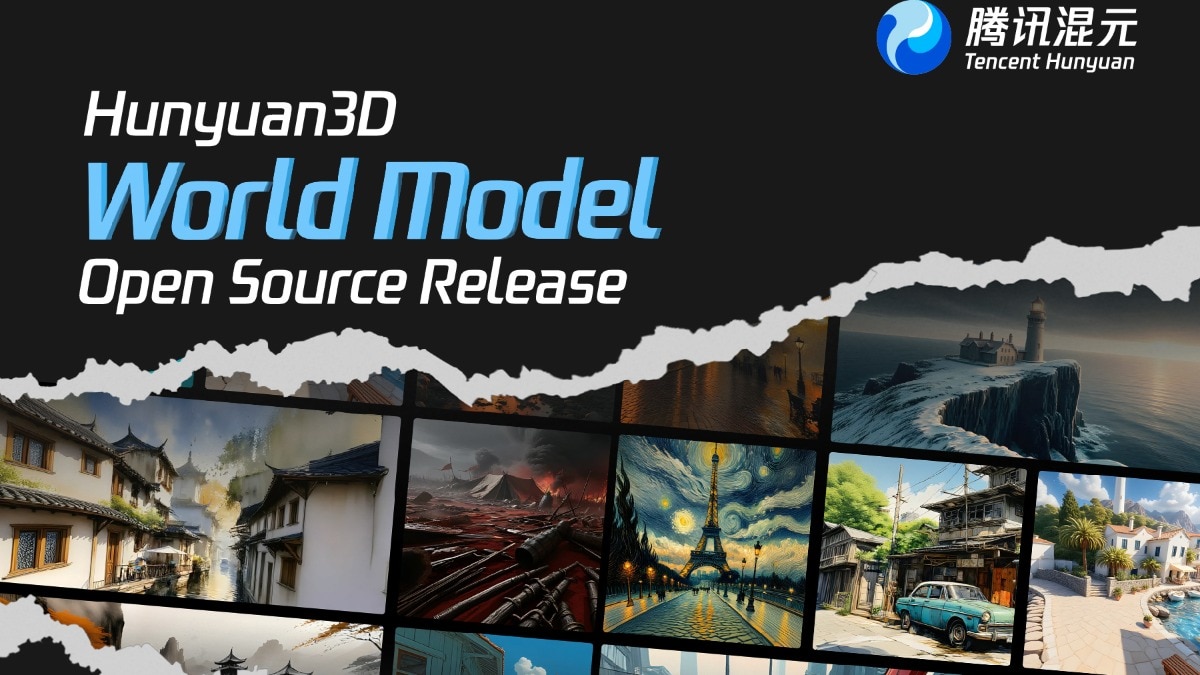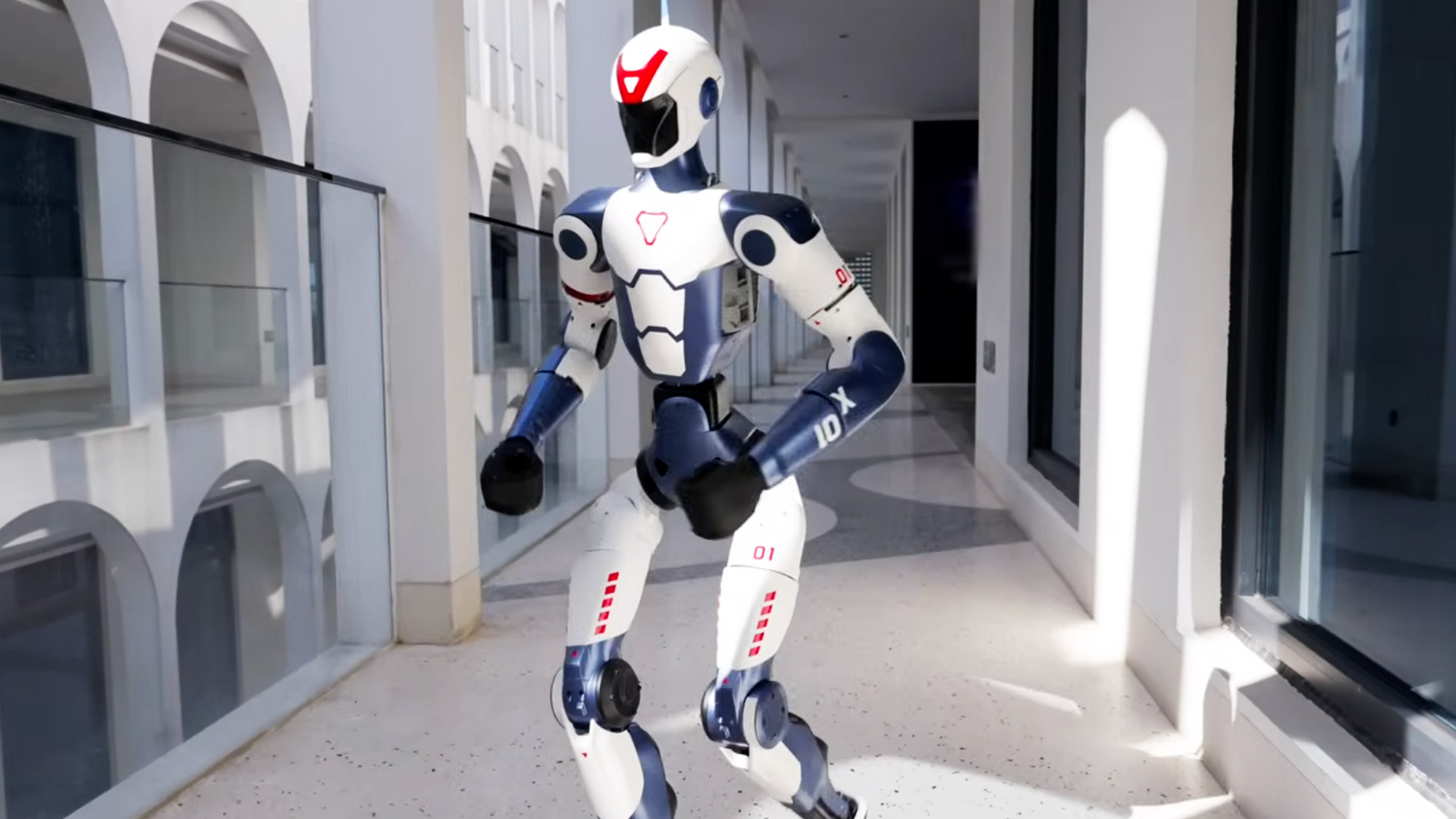- Vision Quest
- Posts
- This Week in Tech 83
This Week in Tech 83
Neuralink is building bionic eyes, RunwayML's AI continues to threaten Hollywood jobs and Unitree releases an affordable humanoid
Welcome to the cutting edge ⚔️
Read time: 7 min
Today’s Slate
Tencent drops Hunyuan 3D: New open-source model builds full virtual worlds from text or images for games, VR, and the metaverse
Neuralink enters bionic eye race: Elon Musk’s brain chip company partners with UCSB to develop AI-powered vision for the blind.
Space Force taps startups: $4B satellite program adds Astranis and K2 Space to compete with defense giants
ChatGPT gets Study Mode: OpenAI’s new feature pushes students to think before getting answers
Runway Aleph redefines editing: New AI tool can relight, reframe, and rewrite video with just a prompt
Unitree’s $5,900 robot stuns: R1 humanoid does flips, kicks, and could mark a real consumer robotics shift
Yelp auto-generates review videos: AI stitches photos and posts into TikTok-style restaurant recaps
China proposes global AI group: Premier Li Qiang pitches cooperation while U.S. sharpens its tech alliances
The. Future. Is. Here.
Artificial Intelligence
At a glance
Tencent launches Hunyuan 3D: New open-source AI model generates fully explorable 3D worlds from text or image prompts.
Game-ready environments: Outputs are real-time navigable and usable for gaming, VR, and digital content.
Novel architecture: Uses semantically layered 3D meshes built from panoramic images for consistency and visual diversity.
Available now: Released under a permissive license on GitHub and Hugging Face, with online testing available.
Toolchain compatible: Works with Flux, Hunyuan Image, Kontext, and Stable Diffusion; API access not yet confirmed.
Our vision
Tencent’s Hunyuan 3D Model opens the door to fast, AI-driven worldbuilding with no dev team required. By blending rendering quality with 3D consistency, it gives creators a powerful new tool to generate game levels, training spaces, and virtual experiences from a single prompt. It’s not just about making virtual worlds faster, it’s about reimagining who gets to build them.
At a glance
China unveils AI action plan: Premier Li Qiang calls for global AI cooperation and proposes forming an international AI organization.
U.S. vs China strategies diverge: China promotes multilateral collaboration; the U.S. plan, announced days earlier, emphasizes limiting bias and boosting American tech abroad.
Geopolitical AI blocs form: Experts see China aligning with Belt and Road nations, while the U.S. leans on allies like Japan and Australia.
Tech access still contested: Despite U.S. chip restrictions, Nvidia resumes limited exports to China, which is advancing its own AI chip development.
High-level presence: Former Google CEO Eric Schmidt met Chinese officials ahead of the Shanghai AI conference.
Our vision
China’s AI diplomacy move signals a global split in how nations approach the next wave of tech leadership. While the U.S. prioritizes control and ideological alignment, China is building influence through collaboration and infrastructure, especially in the Global South. The battle for AI dominance isn’t just about models and chips anymore, it’s about who writes the rulebook.
At a glance
Runway unveils Aleph: New AI model offers advanced video editing tools like camera angle generation, object removal, relighting, and shot continuation.
Real footage, real VFX: Unlike text-to-video tools, Aleph manipulates filmed footage with prompts, promising near-instant post-production magic.
All-in-one editing suite: Handles everything from style transfers to green screen mattes without needing specialized VFX teams.
Impact on industry: Could shrink crews, slash budgets, and shift post workflows while raising concerns about job displacement in film production.
Not yet available: Early access coming for partners, with wider release planned soon.
Our vision
Runway Aleph may be the most powerful AI post tool yet, collapsing entire departments into a prompt-based interface. If it lives up to its demo reels, it could democratize Hollywood-grade effects while redefining the economics of production. Filmmakers now face a crossroads: adapt fast, or get out-edited by an algorithm.
Check out this example bringing The Matrix underwater
Me, every time I get in a pool...
(via @runwayml Aleph)
— Blaine Brown (@blizaine)
2:34 PM • Jul 29, 2025
At a glance
OpenAI launches Study Mode: New ChatGPT feature encourages students to think critically instead of just getting answers.
Interactive learning: ChatGPT now asks follow-up questions and may refuse direct answers unless users engage with material.
Rolling out now: Available to Free, Plus, Pro, and Team users; Edu subscribers to follow in coming weeks.
No parental controls (yet): Students can still switch out of Study Mode, though admin locks may come later.
Part of a bigger trend: OpenAI follows Anthropic’s lead with Claude’s Learning Mode, as AI tools evolve into study companions.
Our vision
Study Mode marks a thoughtful pivot for ChatGPT, from answer engine to tutor. As AI gets baked into classrooms, OpenAI is betting that helping students learn how to think will win out over just telling them what to say. It’s a solid step forward but for now, it still relies on students wanting to do the work which is more than likely the unaddressed root cause.
At a glance
Yelp rolls out AI videos: AI-generated restaurant videos now live nationwide in Yelp’s iOS app, using user-posted content and reviews.
How it works: OpenAI writes the script, ElevenLabs voices it, and Amazon Transcribe handles captions—blending visuals with an AI narrative.
No opt-out (yet): Users and business owners can’t opt out of having their content used, though inaccurate videos can be reported.
Feed-first format: Videos appear in a TikTok-style scroll but only one video per business is active at a time.
AI push continues: Follows Yelp’s recent additions like AI review summaries and smarter filters.
Our vision
Yelp’s AI-stitched videos turn reviews and photos into snackable stories, aiming to capture your attention before you even tap a star rating. While the content isn’t personalized yet, it’s a clear sign that Yelp wants to shift from static directories to dynamic discovery—one AI voiceover at a time.
Robotics
At a glance
Unitree unveils $5,900 R1 robot: A compact humanoid capable of cartwheels, kickboxing, and running with remarkable agility.
Specs at a glance: Stands 4 feet tall, weighs 55 lbs, features binocular vision, AI voice/image ID, 26 joints, and an hour of battery life.
Breakthrough price point: Significantly undercuts other humanoids like the $16K G1, $90K H1, or Figure AI’s expected $30K+ bot.
Early days, big warnings: Unitree cautions users on safety and admits current capabilities may differ from what’s shown in demos.
Smart but not ready: Intelligence, autonomy, and task capabilities remain unclear but movement is the focus for now.
Our vision
At under $6,000, the Unitree R1 could be the tipping point for mainstream humanoid robotics. Its physical agility is impressive, but questions about real-world utility and safety mean it’s not quite home-ready. Still, this pint-sized powerhouse signals how fast humanoids are evolving—and how close we might be to having one sparring in your living room.
Introducing Lume, the robotic lamp.
The first robot designed to fit naturally into your home and help with chores, starting with laundry folding.
If you’re looking for help and want to avoid the privacy and safety concerns of humanoids in your home, pre-order now.
— Aaron Tan (@aaronistan)
4:00 PM • Jul 28, 2025
Space
At a glance
$4B satcom program ramps up: Space Force awards $37.3M to Boeing, Northrop, Viasat, Intelsat, and newcomer Astranis to design jam-resistant satellites.
Commercial edge: Intelsat will source hardware from K2 Space, signaling a deeper shift toward startup collaboration.
Faster procurement model: Instead of billion-dollar, years-long projects, Space Force is backing agile commercial timelines.
Selection in 2026: One design will be chosen for first launch in 2028, with additional production contracts to follow.
Strategic pivot: Protected Tactical Satcom aims to future-proof battlefield comms by blending military standards with commercial innovation.
Our vision
Space Force is betting that startups and commercial players can outpace traditional defense giants when it comes to speed and flexibility. With Astranis and K2 Space in the mix, this marks a turning point for how military satellite systems get built and who builds them. Jam-resistant battlefield comms might be the mission, but the bigger signal is clear: modern defense will be faster, leaner, and more startup-friendly.
Biotech
At a glance
Neuralink joins Smart Bionic Eye trial: Elon Musk’s brain-tech company is teaming up with UC Santa Barbara to explore AI-powered vision restoration.
Goal of the study: Enable tasks like facial recognition, reading, and navigation for the blind using scene-understanding AI.
Blindsight device: Uses camera-equipped glasses and brain implants to bypass damaged eyes and optic nerves.
Regulatory progress: Received FDA Breakthrough Device Designation in 2024; first human trials expected by late 2025 or early 2026.
Our vision
Neuralink’s push into vision restoration signals a broader shift from mobility to sensory enhancement in brain-machine interfaces. With the Smart Bionic Eye project and the Blindsight system, Neuralink envisions a world where AI interprets the environment and feeds that information directly into the brain.
This could redefine independence for blind individuals and blur the lines between assistive tech and human augmentation. If successful, this fusion of neural implants and AI-driven perception could set the stage for future enhancements beyond natural human capability.
How did you like this week's edition? |
Choose the Right AI Tools
With thousands of AI tools available, how do you know which ones are worth your money? Subscribe to Mindstream and get our expert guide comparing 40+ popular AI tools. Discover which free options rival paid versions and when upgrading is essential. Stop overspending on tools you don't need and find the perfect AI stack for your workflow.








